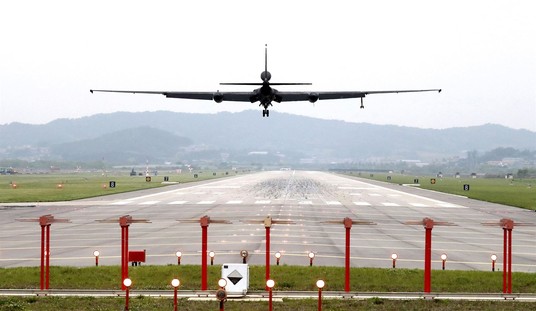
This new book from Templeton Press tells the fascinating story of the explosion of Christianity in China. Credit: Templeton Press
Are we seeing China transform from a mission field to a bastion of Christianity? Faith in Jesus Christ has spread like wildfire in the world’s most populous country — and A Star in the East: The Rise of Christianity in China puts this remarkable trend in concrete numbers.
Missionary work in the Far East goes back over 1,000 years, but in the 1930s Americans thought it was a lost cause. Intellectuals mocked the reported millions of Chinese believers as “Rice Christians” – people desperate for the social services the Church provided, but likely to abandon faith in Jesus as soon as the missionaries left.
History tells a different story, however, and authors Rodney Stark and Xiuhua Wang have the data to prove it. As Stark told PJ Media in a phone interview, “When it became legal or safe to be revealed as a Christian, the ‘Rice Christians’ hadn’t quit, but had multiplied by a factor of three.” In another stunning twist, the more educated are more likely to become Christian.
Faith by the Numbers
Christianity — and religion in general — is still taboo in China. In the 1950s, the Communist government outlawed religion, persecuted faiths, and turned a blind eye when mobs destroyed churches and traditional temples. Because of this recent history, people are hesitant to declare their faith openly.
“Secularists love to brag that three quarters of Chinese are atheists,” Stark said, but a comprehensive 2007 study on religion in China showed that no less than 72 percent of Chinese had “venerated ancestral spirits by their graves” in the past year (p. 6). “You and I would say people who pray to the gods are engaged in religious activity,” Stark quipped.
In China, however, only official members of certain Buddhist temples or Christian churches are considered “religious.” Many Chinese express belief in Jesus but do not identify as religious or Christian in this institutional sense.
Christians, in particular, because of the threat of persecution, have a tendency to be wary of surveyors and claim that they are not Christian. Stark and Wang collected the names of house-church members across China, and gave them to the same company which performed the 2007 survey. 9 percent of these church members blatantly said they were not Christians. A full 62 percent refused to be interviewed (in the original study, only 38 percent of those polled declined to answer questions).
Since the results of such polls are “very much understated,” Stark and Wang had to estimate the number of Christians in China. Their work showed a 7 percent annual increase from 1980 to the present. In 1980, there were approximately 10 million Christians in China. In 2007, there were 61.1 million.
In China, dozens of churches open every week. By 2030, they estimated, there will be 294.6 million Christians — nearly the entire population of the United States.
Purified by Fire
But the story of Christianity in China is hardly one of easy, steady growth. There was a great deal of persecution, and Stark compared it to the persecution under the Roman Empire.
Stark and Wang tell the story of Wang Zhiming, an ordained pastor who was brutally executed in a stadium in 1973. His death sparked a riot, but his suffering was not in vain. When he was arrested in 1969, there were an estimated 3,000 Christians in his native city, Wuding. By 1980, the number had reached 12,000 (p.60).
Peter Joseph Fan Xueyan was ordained in Rome and became bishop of Baoding. In 1958, he was arrested for remaining loyal to the Pope and sent to a forced labor camp. After a series of releases, re-arrests, and further torture, police dumped a plastic bag holding Bishop Fan’s frozen body in front of a family member’s home. Although officials said he died of pneumonia, the body had broken bones and other injuries which indicate extensive torture.
While the government imposed martial law to prevent people from attending Bishop Fan’s funeral, at least 10,000 paid their respects (p. 55).
Many famous Christian leaders imprisoned for their faith survived, and this book features many of their tales. Imprisoned pastor Li Tianen, founder of the largest house church network in China, even brought one of his bitter enemies in the Communist Party to Christ, while both were in prison. Not only did persecution fail to stop the Chinese from believing in Jesus, it also encouraged a stronger form of Christianity.
Stark and Wang note the success of evangelical Christianity through persecution, as opposed to a more lukewarm faith. Overly inclusive Christians — who tend to doubt the importance of converting people from traditional faiths — often prove less persuasive than evangelicals.
“Lukewarm liberalism simply could not generate the level of commitment needed to hold onto one’s faith in the face of considerable personal risk,” write Stark and Wang (p. 72). American surveys show few members of liberal denominations witness to others, while a great majority of evangelicals do so. This passion contributes to the growth of traditional Christianity in the West — and the lack of less committed Christians in China.
Faith and Reason – Christians and Education
Karl Marx famously called religion “the opium of the masses,” and many sociological theories explain faith as a poor man’s substitute for power and wealth. The research of Stark and Wang blows serious holes in this “deprivation theory,” however — not only in China but in other Far Eastern countries as well. In that part of the world, the educated are actually more likely to convert to Christianity.
The 2007 survey found that Chinese who attended college were the most likely to embrace Christianity, while those with less than a high school education were almost twice as likely to be Buddhist.
Stark and Wang also surveyed Hong Kong, Singapore, South Korea, Taiwan, and Japan. 30 percent of Hong Kong residents with a college degree identified as Christian, while only 12.3 percent of high school dropouts did so. In Singapore, college grads are 32.7 percent Christian, while those with less than high school are 6.3 percent. The numbers are similar for South Korea (39.1 percent to 32.5 percent), Taiwan (8.3 percent and 5.2 percent), and Japan (3.2 percent to 0.8 percent).
What accounts for the success of Jesus among these elites? Many East Asians think Christianity is central to modern markets, technology, and freedom. A leading Chinese economist even wrote, “The Christian moral foundation of social and cultural life was what made possible the emergence of capitalism and then the transition to democratic politics. We don’t have any doubts about this” (p. 83).
As Stark said in the interview, “Many Chinese Christians will tell you that the West modernized because of Christianity, and therefore China has to become Christian because the faith is the basis of the whole thing.”
In contrast, traditional Chinese beliefs and folk practices do not conduce to free markets, democratic politics, and forward thinking in general. “Belief that the past was superior to the present and that the future is more downward than upward is an idea that doesn’t fit very well with a society that over the last 40 years has become incredibly industrialized,” Stark said.
Christianity, by contrast, is “a faith in progress — a faith in the future.” Not only do believers see Jesus as the culmination of the Law and the Prophets, but they also see his Holy Spirit working in the church, allowing us to think the thoughts of God after Him. We look to the resurrection of the dead, and the life of the world to come — not the glory of ancestors overshadowing their descendants.
Short, Brilliant, Fascinating
“A Star in the East” takes a microscope to the world’s largest religion in the world’s most populous nation — and it is anything but a dull read. Stark and Wang eloquently and concisely lay out the history — and future implications — of Christianity in China. A story of missionaries, converts, and martyrs, it introduces the audience to a foreign and fascinating setting — and a new approach to understanding the social implications of faith.
Faith and reason, persecution and resurgence — even a section on the importance of social networks — each make this book both deep and engrossing. Even better, at 126 pages, it’s a quick, engaging read.
After fierce persecution in the world’s most populous country, Christianity continues to flourish. As more educated Chinese come to believe in Jesus, even some low-level members of the Communist Party are putting up crosses in their homes.
Perhaps, like Rome before it, China may one day become a center for the Christian faith. Maybe, it already is.
Rodney Stark and Xiuhua Wang. A Star in the East: The Rise of Christianity in China. West Conshohocken, PA: Templeton Press, 2015. 160 pp. $19.96









Join the conversation as a VIP Member